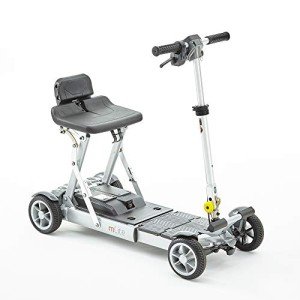Understanding Mobility Devices: Enhancing Independence and Quality of Life
In today's busy world, the desire for mobility is universal. Nevertheless, specific medical conditions or age-related challenges can impede movement, causing an ongoing search for assistance. Mobility devices function as vital tools to improve self-reliance, enhance lifestyle, and allow individuals to engage completely in their neighborhoods. click for info offers a comprehensive overview of mobility devices, including their types, functions, choice criteria, and more.
Kinds Of Mobility Devices
Mobility devices vary from basic aids to complex devices, customized to fulfill various requirements. Below is a table summing up typical types of mobility devices:
| Type of Device | Description | Perfect For |
|---|---|---|
| Walkers | Four-legged support devices that supply remarkable stability while walking. | Individuals requiring extra support. |
| Walking canes | Single or three-legged sticks that enhance balance and support walking. | Those with slight mobility difficulties. |
| Wheelchairs | Seats mounted on wheels, offered in manual and electric versions. | People with limited or no mobility. |
| Scooters | Electric lorries created for outside usage and ease of navigation. | Those who can't walk fars away. |
| Crutches | Devices that help people transfer weight far from a hurt leg. | People recovering from leg injuries. |
| Rollators | Walkers with wheels, seats, and brakes for improved mobility. | Users requiring rest options while strolling. |
| Raise Chairs | Reclining chairs that assist users in standing up and sitting down. | Seniors or those with mobility restraints. |
| Mobility Scooters | Small electric cars for limited mobility, typically used outdoors. | Individuals needing help over long distances. |
Key Features of Mobility Devices
When choosing a mobility gadget, a number of key features need to be thought about to guarantee optimal functionality and ease of usage:
- Weight Capacity: Understanding the gadget's weight constraint is crucial for safety and effectiveness.
- Adjustability: Devices should be adjustable in height and width to fit the user comfortably.
- Mobility: Lightweight and foldable options are important for users who travel or need transportation.
- Stability and Safety: Look for functions like anti-tip wheels and durable structures to enhance security.
- Ease of Use: Simple systems and easy to use styles can make a significant distinction in day-to-day usage.
- Convenience: Ergonomic styles and cushioned seats can boost the user experience.
Choosing the Right Mobility Device
Selecting the ideal mobility gadget can be a daunting task. Here are some steps to assist the decision-making procedure:
- Assess Needs: Evaluate the person's mobility challenges and day-to-day activities.
- Seek advice from a Professional: Engage health care specialists who can provide suggestions based on the individual's physical condition.
- Trial Options: If possible, trial different devices to figure out comfort and functionality.
- Evaluation Budget: Consider the cost of the gadget, consisting of any additional features or adjustments required.
- Research study Options: Determine the best brands and designs by checking out reviews and comparisons.
Table: Comparative Analysis of Popular Mobility Devices
| Gadget | Advantages | Downsides |
|---|---|---|
| Walkers | Excellent stability, promotes strolling. | Bulky, might restrict movement in small areas. |
| Walking canes | Lightweight, improves balance. | Might not offer enough support for severe mobility problems. |
| Wheelchairs | Ideal for those with substantial mobility constraints. | Can be cumbersome, particularly in indoor environments. |
| Scooters | Great for outdoor usage, easy to maneuver. | Restricted indoor use, heavier. |
| Rollators | Offers rest choice, easy to move. | May need more space than traditional walkers. |
| Raise Chairs | Comfortable, helps shift from sitting to standing. | More expensive, larger footprint. |
Often Asked Questions (FAQs)
1. What is a mobility gadget?
A mobility gadget is any tool created to assist people in moving and browsing their environment. This includes walkers, wheelchairs, scooters, and crutches.
2. How do I know which mobility gadget is best for me?
Consider your specific mobility obstacles, physical capabilities, and lifestyle requirements. Consulting with health care professionals can also provide customized recommendations.
3. Are mobility devices covered by insurance?
Many insurance plans, including Medicare, may cover certain mobility devices. It's essential to inspect with your insurance supplier for specific protection information.
4. Can I rent a mobility gadget instead of purchasing one?
Yes, numerous medical supply shops and drug stores offer leasings for mobility devices. This choice is helpful for people with short-term mobility concerns.
5. How can I maintain my mobility device?
Regular upkeep is essential. It includes cleaning up the gadget, checking for wear and tear, and making sure all parts are operating properly.
The Impact of Mobility Devices on Quality of Life
Mobility devices significantly enhance the lifestyle for individuals with limited mobility. They foster self-reliance, encourage social interaction, and boost access to vital services and leisure activities.
- Increased Independence: Users can browse their communities, go to events, and engage in pastimes without relying on others.
- Social Engagement: Mobility devices help with involvement in social gatherings, thereby combating sensations of seclusion.
- Enhanced Safety: Devices supply stability and decrease the risk of falls, promoting user self-confidence.
Mobility devices are more than simply tools for motion; they are entrances to self-reliance and quality living. By comprehending the different kinds of mobility aids available, their key features, and factors to consider for choosing the best device, people can make educated decisions about their mobility requires. Ultimately, the ideal mobility gadget can result in a more active, satisfying life. Whether it's a walker, wheelchair, or scooter, the right option contributes significantly to enhancing the mobility and self-reliance of users.

